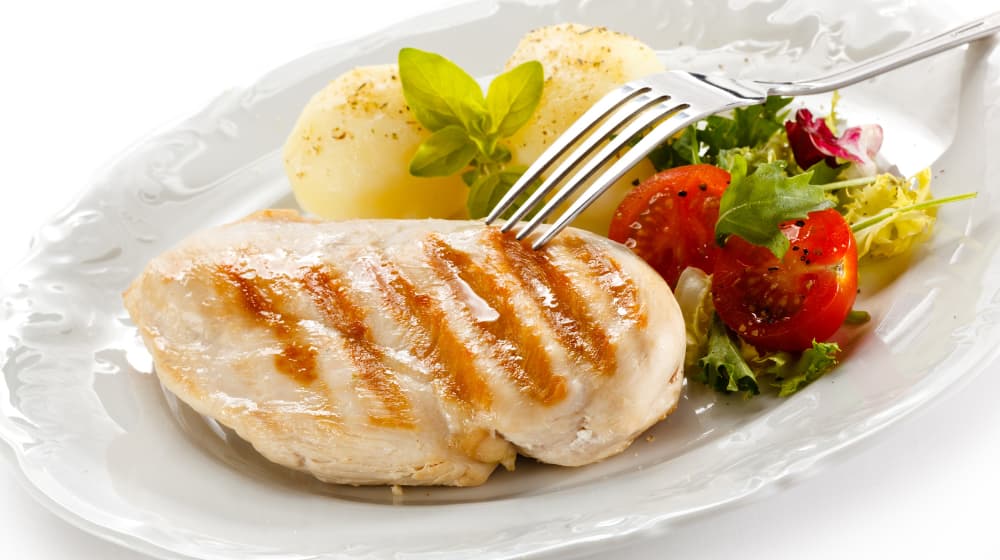
Categories
What Does a Good Meal Look Like?
In this post I wanted to highlight a few things. Firstly, what a good solid meal looks like nutritionally. And secondly, how small decisions can have a big impact.
Forgive me if I’m sounding patronising and as if I am preaching, but in the modern day we seem to have become too far removed from what we are actually getting from our food.
We see food as a means to an end and sometimes a way of triggering short-term happiness rather than something that nourishes us.
Don’t get me wrong, sometimes life really is too short and you need to enjoy a whole tub of ice cream, we aren’t robots and food is meant to be enjoyable, I get that, but the key is making the right decision the majority of the time.
Ok, now that you all have your minds on attacking a whole tub of Haagen-Dazs, I’m going to run through a typical ‘bad’ option and a ‘good’ option, for most people, of a meal for breakfast, lunch and dinner and list what is in it from a macronutrient point of view.
With the ‘bad’ examples I have tried to use ideas that are either common choices or that a lot of people have the belief they are the healthy option.
Breakfast
Bad
50g of Special K, 100ml of semi skimmed milk, glass of Tesco organic orange juice
209 calories
2g fat
40g carbs
7g protein
1g fibre
Good
100g Full fat total Greek yoghurt, handful of blueberries, scoop of chocolate whey protein, pint of water
297 calories
13g fat
30g carbs
33g protein
4g fibre
Lunch
Bad
Wholemeal tortilla wrap, strawberry and banana Innocent smoothie, Strawberry Alpen bar
412 calories
5g fat
75g carbs
8g protein
8g fibre
Good
200g lean beef mince (made into 2 burger patties), 1 cup of brown rice, 1 whole red pepper, 1 cup watercress.
377 calories
13g fat
39g carbs
27g protein
9g fibre
Dinner
Bad
Pasta Bolognaise bake, glass of white wine
518 calories
15g fat
45g carbs
26g protein
3g fibre
Good
Sea bass, sweet potato mash, green beans, half avocado
422 calories
18g fat
32g carbs
29g protein
11g fibre
Ok, so to this point that’s all just numbers, so let’s look at it all in context.
Here is a breakdown of the daily totals if we were to add the meals together.
“Bad” choices –
1,129 calories
22 grams of fat
160 grams of carbs
41 grams of protein
12 grams of fibre
“Good” choices –
1,096 calories
41 grams of fat
101 grams of carbs
89 grams of protein
24 grams of fibre
You don’t need to be a rocket scientist to work out that isn’t much food, especially if you are a 90kg male looking to pack on some more muscle mass (you, my friend, would definitely need to eat more).
However, this is aimed more towards the smaller female population lacking some muscle mass.
The calories on both totals are relatively low, as we haven’t taken into considerations snacks or shakes etcetera, but I will touch on that later. For this post I just want to focus on meal choices.
Other than that as you can see the ratios when it comes to bad choices are fairly off where as the rations on the good choices are more ‘balanced’, or closer to the average persons requirements.
Dietary fat is not such a bad thing. We have done previous blogs on this, you require a certain amount for cell health and hormonal production and 22g per day is not a lot at all.
The carb heavy breakfast with zero protein, which is very common, leaves you with a lot to make up over the next 2-3 meals depending on how many times a day you eat.
Protein is obviously muscle sparing and therefore will aid you in fat loss and 41 grams again is very low. You want to roughly aim for 2g per kg body weight.
Adding a protein shake with some fats in or some Greek yoghurt with berries to the good choices would be a good way to increase calorie and protein intake to something slightly closer to where many people want to be.
Finally, everyone knows you need fibre, something that many people, females especially, do not get enough of. Digestion plays a massive role in health and fat loss.
Aim for roughly 25 grams per day or if you are super high calorie you will need around 10g per 1,000 calories.
As an aside, here is a nutritional breakdown of our shakes at the gym, as we often get asked what they breakdown as. I’ve also thrown in an amount of calories in some popular alcoholic beverages for those curious.
Protein shake – 2 scoops vanilla whey and frozen berries
306 calories
6 grams of fat
20 grams of carbs
47 grams of protein
5 grams of fibre
Calories in alcohol
Gin and tonic -75 calories
Vodka and coke –78 calories
Pint of Beer (Heineken) -255 calories
Glass of red wine- Large 228 calories, small 119 calories
We help our members with a nutritional programme that works for them, if you’re struggling, give us a shout at our South East London gyms or try out our personal training and we’ll help you work out a plan that suits you.
Related Articles
- Meal Prep for Fat Loss
- Some Basic Food Shopping Guidelines
- Searching for The Perfect Diet
- Working Out, Eating Well But not Losing Weight?
- Meal Prep Plan for 7 Day Training Cycle

